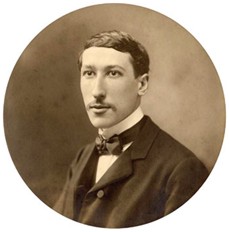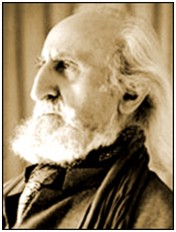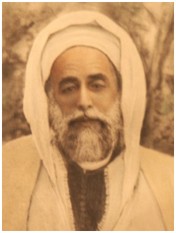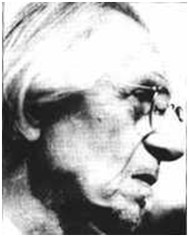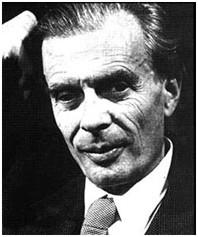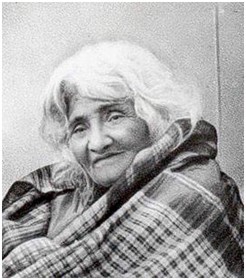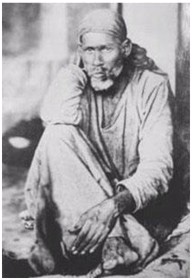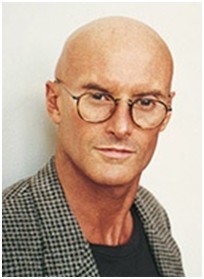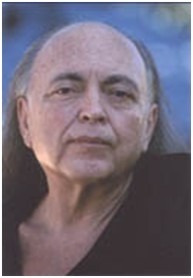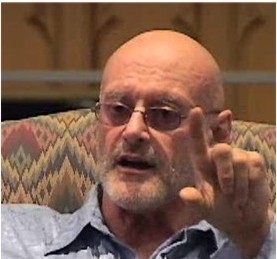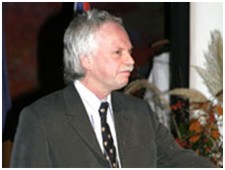The Journeyman – The Making of a Muslim Quaker
The Journeyman – The Making of a Muslim Quaker 2004
Brent Miller-White
How does a person start out as a liberal Protestant Christian, follow doubts about Christian orthodoxy into Quakerism, move from there to becoming a Muslim – and through Islam find a way back to understanding and valuing Jesus?
That’s my story, a journeyman’s story, which is laid out below.
My understanding of a journeyman or woman is someone who undergoes a particular apprenticeship that qualifies them to work for other people. My candidacy for such an appellation began unknowingly via being blessed with worldly parents and being exposed to very basic Christian roots.
My journey began when my parents moved from New York to a farm in the small town of Bethel, Connecticut, which suffered a polarized Protestant/Catholic setting where e.g. intermarriage was a rarity. The Congregational Church provided the compromise of their separate religious backgrounds, one Methodist and the other Christian Science. Our small church supported a missionary in Africa by the name of Minnie Carter.
I was much too young to pay attention to the country or countries that she served, but the impression of her devotion to her predominantly service-oriented mission did take hold. This also later influenced Eleanor Tishkins, the widow of our minister, to go to India under the auspices of The United Church in a service-oriented role as opposed to one of proselytism. Years later we shared memories of our different lay missionary experiences.
In 1938, my parents became active in the Moral Re-Armament movement and I attended all of their house parties, the agenda of which was based upon evangelism which emphasized “absolute honesty, purity and love.”
Who could take issue with that? The MRA, also known as The Oxford Group, peaked about 10 years later and then slowly subsided. It was also a “spiritual ancestor” of the Alcoholics Anonymous movement. [The group still exists, renamed in 2001 as “Initiatives of Change.” Its website is: http://www.uk.initiativesofchange.org/] It amuses me to think of its promotional success as the forerunner of such commercial techniques as Tupperware parties. Such a reference is not made entirely in jest. Long ago it had occurred to me that the politics of capitalism, i.e. commercialism, is very much involved with Christianity. Even today, President Bush is in bed with fundamental Christianity, and who knows how such is manifested politically and commercially within our cultural approach to God while we’re trying to keep a secular straight face?
The MRA experience eventually proved to be somewhat of a blessed event because it introduced my parents to meditation and in 1942 influenced them to send me to George School, a Hicksite-founded Quaker boarding school near Philadelphia. That result, however, initially backfired because it caused me to exercise the first of several rebellious acts as an otherwise seemingly harmless teenager. On First Day mornings I began to disappear in order to attend a nearby Presbyterian church, so I could sing in their choir. To stake my claim to a more active Christianity, I also began wearing a small cross in my lapel – i.e. my heart was now ‘on my sleeve,’ unseen but pounding hard and fast. I think I was experiencing the born-again phenomenon long before that term became popular.
Fortunately, George School also had another required Meeting for Worship on Wednesdays, so my brain continued to be washed just enough in Quaker practice to actually cause me to finally rise to my feet just before graduating in 1946. My confused message from God was immediately explained by my Religious Education teacher, who I suppose had a more direct line to God. I suffered a degree of mortification but managed to survive to speak again in Meeting for Worship a few years later. I now wish I could remember what that original message was all about.
After George School, I entered Trinity College in Connecticut, where chapel credits were mandatory. What a mistake that was. Its Episcopalian trinitarian approach was emphasized from the pulpit and/or within such rote acts as Responsive Readings and/or joint prayers, and I found myself simply unable to relate to such an environment. The realization of what a Quaker Meeting had to offer had finally taken hold. I never would have graduated due to my already familiar practice of going elsewhere, and so I became an Attender at the Meeting in Hartford. In doing so it might be said that I had rediscovered congregational stability. I also began to replace bible readings with Aldous Huxley’s The Perennial Philosophy, published in 1945. Rufus Jones called it “a magnificent achievement” and it really worked for me, its basic setting being that “Only the pure in heart can see God.”
My eventual marriage in 1951 to Theodora Whitaker, in an Episcopal church, was my next and also my last experience in being led to the trough of the logia of Jesus in terms of “Lift the stone and you will find me.” I recall vividly feeling offended by being asked to polish the soles of my new shoes so that when I knelt down to face the minister and his book, the congregation would not have to look at any dirty soles. What about dirty souls?
Fortunately, my marriage resulted in the blessings of four daughters and out of that came the instinctive realization that original sin could not possibly be a valid truth. My Christian box had begun to get some large holes in it. However, the understandings I felt that related to being of Christian service were not disturbed. No indeed. These were instead reinforced throughout by the world’s unrest during the thirties; and by the time World War II came into play I had already become a convinced pacifist confused only by the involvement of my peers, particularly my brother, in making themselves available to military action.
Lurking in the emotional background of such disturbing modern history was my bewilderment in learning that my roots included a female ancestor, a daughter of the Chief of the peaceful Siwanoy Tribe that lived on the land between Connecticut and Manhattan Island. She was one of 24 survivors of an organized massacre by combined Dutch/English forces in 1644. The purpose? The seizure of land. Between 500 and 700 Indians killed.
What on earth were Christians thinking then and since? It was 246 years later, in 1890, when my father was barely a year old, that the last massacre of Native Americans took place, at Wounded Knee in South Dakota. By 1899, our national occupation was finalized with the recognized total collapse of all tribal governments.
Despite my discomfort with Christian history my eventual personal need to be of service took hold in the early sixties at the age of 35. However, the concept of becoming available for overseas service immediately seemed doomed to failure. My search began with the American Friends Service Committee, not only because I was a Quaker but because I knew that I could not become involved with proselytism. AFSC, however, showed no interest in a man with a large family. Maybe we didn’t fit into its budget.
Fortunately, the more affluent Church World Service program of the National Council of Churches responded to our availability and we agreed to an assignment in the Middle East where proselytism was not an issue. Coincidentally this introduced us to the spreading wide of Quaker wings (other journeymen and women) in the world of service. I not only replaced a retiring Quaker, Willard Jones, as the CWS Representative to the Middle East but I was later replaced by Yoon Gu Lee, a Korean Quaker. Further, our work was carried out through the offices of the Near East Council of Churches in Beirut whose Secretary, Richard Butler, was a graduate of Earlham.
The Council’s Committee on Refugee Works was located in Jerusalem so, in the early sixties, with my venturesome wife and our four young girls we took up residence on the Arab side of the divided city of Jerusalem. We rented the basement of the former Iraqi Consulate which happened to border the old Hebrew University grounds that now housed an Israeli garrison that had a personnel exchange every two weeks under the protection of the UN. Our house and grounds, with its high wall, became an occasional military position, right on the 50-yard line, whenever hostilities broke out.
This often put the children at risk over the next three years and I’d have to run home from my nearby office to make sure they were staying undercover. The walls were thick but so were the bullets. Fortunately, the only close call we had was a stray bullet that bounced off an inside wall and ended up in the hem of a nun who was caring for Theodora in the hospital behind our house. She was suffering from severe hepatitis and the eventual effects of culture shock which later caused her early return to the States.
That is the background that led eventually to my getting out of the Christian baptismal pool that I had been washed in for so many years prior to becoming a Quaker. My work took me to six divergent areas of the Middle East . . . Syria, Jordan, Egypt, Lebanon, Gaza and the western protected newcomer, Israel. Each government was a form of theocracy and my work was carried out by indigenous Christian committees in each country through their refugee programs, which primarily affected Palestinian Muslims.
My most exciting work, when not traveling, was on the Israeli/Palestinian border of the West Bank. We had a self-help development program in 112 border villages populated primarily by Muslims. Most of the indigenous Christians (10% of the whole) were located in the more heavily populated areas. One could easily tell that they had come under a much greater exposure to western secular influence than the Muslim population. We were not involved with any direct proselytization but the implication was there. That was somewhat troublesome. Muslim curiosity was always at its peak. “Why is Abu Yacoub (my Arabic name) helping us with these projects? What is his motivation?” My particular moral sensitivity was not obvious enough for their immediate understanding of the ‘whys’ and ‘what fors.’ In time the efficiency of village networking took hold and a lasting depth of personal relationship surfaced that took care of such needs.
Meanwhile, life in Jerusalem proved to be very exhilarating. Theodora had become a skilled unofficial travel guide for visiting internationals and our oldest children were attending the Friends School in Ramallah. We further enjoyed the beaches of Gaza, the mystique of Damascus, cosmopolitan Beirut, the modern emergence of Amman, a multitude of archeological sites . . . the most outstanding being Petra. Then of course there were the side trips to such places as Cyprus, Greece, Baghdad and Istanbul.
In return, as residents of Jerusalem, we were caught up in the hosting and education of international visitors, experiencing the passion of multitudes of Christians at Easter time. We were also on hand to witness the excitement of the Islamic welcome when the Pope visited to meet with the Eastern Orthodox Patriarch, and also made contact with the enlightened King Hussein of Jordan.
Whenever visiting clergy came through Jerusalem we would invite one of them to preach at the YMCA Chapel. On those rare occasions when one was not available there were a few international laymen such as myself who would perform that pulpit exercise without benefit of the educational badge of ordination. I knew this hypocrisy did me more good than the congregation. Similar duties were less of a sensitive challenge in Ramallah, north of Jerusalem, where the Friends Meeting called upon my occasional services. They split their weekly Meeting for Worship between programmed and unprogrammed styles of worship. They more easily accepted the results of my less skilled interpretive role within the spirit of my intentions.
In the interim I began to study Islam by benefit of the wonderful facilities at the American University of Beirut and also Jerusalem’s single book store of new and used books on Middle Eastern subjects. I was immediately drawn to Sufism, the esoteric and mystical side of Islam, then known best for its weird whirling dervishes – which did not claim my hypnotic interest.
Instead I uncovered Sufism’s rich history in the study of sound. Earlier I had already developed skills in a cappella harmony so I knew about making overtones where the root sound is augmented by harmonizing. Our culture enjoys this unknowingly thru the skills of a good barbershop quartet that produces overtones, i.e. a fifth sound. It is also possible for an individual to do this alone, i.e. produce two sounds at once . . . the root and its variety of overtones.
In learning to do this I discovered that it was a very useful sound healing technique. When vibrations of sound produce overtones (the third, the fifth, the seventh etc.), one can enter a disciplined physical vibrational environment that when maximized is great medicine for the soul as well as the body. Practitioners call it toning and/or variations of chanting and I have been benefiting from it for many years.
Such toning or chanting is commonly found in use in various religious bodies but Sufism gave early recognition to it. One day when I was in Istanbul enjoying listening to the sounds of the multitudes of minarets providing the Muslim call to prayer, I suddenly realized that sound vibrations were being put to good use. Today I use silent toning as a personal method of centering down in Meeting for Worship in order to make contact with God.
Sound healing practices have become an important personal hobby of mine. The listening as well as the execution works equally well for the soul. I have become a student of David Hykes’s work with The Harmonic Choir <www.furious.com/perfect/davidhykes.html> producing incredible sustained overtones as a self healing tool useful to one’s spiritual healing path.
https://www.youtube.com/watch?v=j4pVASwvvMk
Sufism goes well beyond the sound work I’ve mentioned. Its basic doctrine is one of love, with its own trinitarian emphasis of Lover, Loved and Love. For me, its poetic works and emphasis on mysticism, supported by the influence of the universality of Quakerism, brought the realization that I had climbed out of my Christian box. It simply had too many holes in it.
But, one very large question always remained and that was my relationship to the gospel teachings. Who could take issue with them? It seemed clear that over the centuries the teachings of Jesus had often been ignored or abused in the name of Christianity, but the teachings always remained available to be put to use or rediscovered for the hopes of future generations. In the words of Muhammad, “The heart is between the two fingers of the Merciful.”
Another current that drew me was monasticism. Life in the Middle East puts one directly in touch with monasticism. When living there one can’t avoid the awareness of being surrounded by ascetic practices that are directed towards a purification of the soul and one can easily get caught up in an almost spontaneous desire to satisfy one’s religious consciousness through direct contact with God.
I’m not suggesting that I was drawn to monastic practice. On the contrary, such practice seemed to be institutionalized and called for being experienced but not joined. The monastery of Mar Saba near the Dead Sea was my favorite one to introduce to visitors, but this was really no more meaningful than a visit to my favorite castle in Syria, the Krak des Chevalier, or visiting Petra in Jordan, my very favorite archeological site.
In my experience, those who fall in love with the Middle East discover very quickly that God is to be found everywhere, and in particular, one can find God immediately available within the relentless passion of its active Muslim community. The Quaker understanding that “there is that of God in everyone” is somehow more easily discerned when it is not burdened with the manifestation of evangelical Christian agendas, particularly those constantly on display overseas where we promote democracy prematurely for some cultural settings.
Upon returning to the West in 1965 I must have brought with me a nomadic urgency, because I have since made a multitude of moves involving six states. I went to Haiti on behalf of The World Council of Churches and subsequently returned to New York to become an Associate Director of CWS. Then, in the early seventies I was privileged to serve Pendle Hill as its Administrative Director in a backup role to its Educational Director. A special privilege that came with that was having Howard Brinton on campus, retired but wonderfully active. After he passed on his vibrations were alive and well in our daily Meetings for Worship.
Influences such as children and grandchildren are partly to blame for my wandering, but the primary influence has been pragmatic in connection with my work in syndication and land development activity. Any proclivity for service work needs to be funded beyond the straightening of children’s teeth or eventual college tuition demands. Ending up today in Asheville (semi-retired) can be traced to a modest investment in forest acreage made with a partner in 1968. The land is still there waiting to experience its inevitable future. To some extent I’ve lived in a closet on this because so many Quakers are critical of any environmental activity relating to the demands of our population growth.
These movements have resulted in a wider Quaker experience within several Monthly and Yearly Meetings. Every move has demonstrated extraordinary differences in each, mostly wonderful but some a little rougher than one would expect, based on what I’ve always perceived as an ingrown institutional stereotypical and almost untouchable ego. As Quakers by osmosis we seem to represent ourselves as being so special and who knows, maybe we are. I have no reason to complain. I don’t allow this to get in the way of my own spiritual quest.
These same geographic movements have given me an opportunity to witness the adaptation of Arabic culture to the West, with particular emphasis on our own immigrant Muslim community. One has to cultivate such contact and in so doing I have had the advantage of limited Arabic language skills. Conversely it also helps to keep them alive. I’ve come to realize and enjoy a personal need to cultivate those ties. It’s an extraordinary culture. I label it as one of the heart. You will not find Arabs on welfare. And once contact is in place they are quick to join in that mutual need to continue to identify with genuine warmth and kindness.
Another realization soon entered into this formula for wanting to foster this cultural relationship. I was taken back to the differences between the Muslim and Christian Arabs that I experienced earlier. And now, here it was again, surfacing within our own secular society. Without any depth of intellectual research I soon decided that it had to be a difference born out of the influence of the West as opposed to that of the East. In other words, many Arab Christians had been converted to western cultural standards despite the fact that the Middle East was the cradle of Christianity.
I had long ago come to the realization that Christian fundamentalists are as big a problem to our culture as the Islamic fundamentalists are to theirs. They both have been painted with the brushes of terrorism. Geographic lines have been diluted. The differences appear to be only degrees of sophistication when such a word is aptly applied to terrorist activities. We Westerners are perceived – correctly – by the East as a malignant society and this feeds the roots of terrorism. They also – correctly – consider us arrogant and that has fostered claims of an indirect or devious imperialism. The latter does not occur in a vacuum and the current end result of a terrorist response is very difficult to avoid.
I’ve come to recognize two important needs for America and the West. First of all, it is obvious that we will have to learn to get along with Islam. Then, what is not so obvious is that we will have to depend upon Muslims to get rid of their own extremist elements, just as Christianity has to deal with its own. War and temporary occupation simply does not work. One need look no further than the abortive occupation of Palestine over the past 56 years, and the recent introduction of walls to create Palestinian ghettos may prove to be the last straw.
9/11 resulted in an extension of my Islamic journey, and paradoxically, a renewal of my Christian roots. Although I had enjoyed social contact with the local Imam (Muslim teacher) in Asheville I had never visited the mosque during its Friday prayers. 9/11 was the springboard that prompted my first visit to the mosque itself, intended to show my support in case we experienced any local reaction as was being reported in isolated incidents across the country. Since that first visit I have now developed a regular Friday habit.
I already had some sense that Islam has perhaps a better understanding of the teachings of Jesus than Christians do. Islam literally means ‘submission’ and is based upon the concept of peace. It makes no division between secular and sacred, and I resonate to this. For instance, I am not one of those who would ask for the removal of our being ‘one nation under God’ in our Pledge of Allegiance, although I have not been available to the Pledge itself for many years.
The tragic acts by Islam’s lunatic fringe on 9/11 are aberrations from Muslim fundamental Koranic understandings. My first mosque visit in 2001 was prompted by the immediate ignorant and paranoiac profiling treatment of those in our midst who appeared to be Arabic. Those of us in my generation were immediately reminded of the injustices caused by the internment of Japanese-Americans after Pearl Harbor. I knew I had to reach out to be supportive, not only to my Arabic friends but to the powerful diversity of the Muslim congregation that I found, standing shoulder to shoulder and kneeling as one body to face the East in a posture that brought their hearts together as one in contact with God.
At the mosque I found a mixture of Arabic nationalities, Africans from many different countries, Indonesians and a few American blacks who had converted in recent years from their Christian upbringing. My initial visits to the Mosque were not without incident. The first found me completely alone except for the evidence of a pair of sandals. My shoes joined them while I went looking for the owner who never did appear. A true romantic might have equated that experience with the sandals of Jesus. The second visit required my being rescued by the Imam. Thirty pairs of eyes were upon me, the newcomer with a perhaps bewildered westernized pale face who was provided with the only chair in the rear of the room plus a visual instruction book on the moves required to make congregational contact with Allah.
My third visit found me standing in the back row and after the call to prayer I was soon experiencing the act of prostration which resulted in my glasses flying out of my shirt pocket! Horrors! What to do? I was no longer pale. I could feel the blood rushing to my head. Retrieval seemed imperative but difficult. Only later did I learn that such was not a problem. My errant glasses were not in the way, and if they had been then one would just pick them up.
Before a subsequent visit I asked the Imam for permission to tape the Call to Prayer. No problem. So, the following Friday, by this time fully confident of all the moves, when I prostrated myself the tape recorder went flying out of my pocket! Anyone familiar with Arabic culture soon realizes that intrigue plays a large role in establishing new relationships. I was still too new to be fully accepted and when my recorder took center stage I instantly knew that my cover had been blown. One or more would think that due to the paranoia of 9/11 the CIA had planted me in the Mosque to record the weekly thirty minute messages of the Imam.
Again, however, I was rescued by the Imam, Yusef. He and I had been visiting church groups in the area to explain Islam and with this incident he now introduced me to the congregation of the mosque, about 40 strong, not as Brett but as Abu Yacoub (my Arabic name) and since then I have become known and accepted. The introduction of course included my prior life and activities in the Middle East.
I must now digress and go back to 1999 to provide some background that relates to the eventual influence that took hold some time after 9/11. Quakerism for me has always involved the technique of centering down. Long ago I often wondered about those who were unable to take advantage of that approach in making ones self available to God in a Meeting for Worship.
In ‘99 I came down with a mysterious brain disorder which was originally diagnosed as Parkinsons Disease, changed later to a variant of Parkinsons, and then changed again to a variant of Multiple Sclerosis – and now, perhaps finally, the diagnosis as a variant of both. The tremors caused by this disorder are such that I’ve been unable to center down, the nature of the tremor being that it becomes active at rest. Any attempt at centering down results in an internal quaking that introduced me to the posture of those in meeting for worship I used to be curious about i.e. those whose active brains didn’t allow them to center down. I soon learned that my only recourse in meeting was to piggyback upon the words of others. Contact with God had become congregational again. And, in regard to the Mosque practice, here it was again, congregational.
There are twenty-two moves to be made in the act of making contact with God in Muslim prayer. One stands in a body, then in sync hands are held up, then brought down and crossed with the right hand over the left and so on thru a body of moves and when one’s forehead and nose touches the floor, with one’s toes pointing inward, that is perhaps the initial moment of contact with God or, as Quakers say, ‘the meeting has gathered.’ I’ve not made reference to the multiple vocal responses in Arabic that are called for. To me they are not unlike a mantra (I wonder what the plural might be for such?).
And so my long term interest in Sufism began to be experienced, not in the direction of a sophisticated intellectual pursuit but rather towards basic tribal or family oriented weekly worship based upon Koranic teachings which include the Hadithic supplements written after the death of Muhammad. Such became the traditions of Islam as understood by the early Arab scholars and they have remained in place for a long time, but today modern Muslim scholars are inclined towards the essential Quaker belief that I’ve heard more than one Imam express in pointing out that “God can breathe His spirit into man.” That and other similar understandings prompted me to explore Islam well beyond my earlier interest in Sufism. My early individual studies turned into an extensive Islamic library that includes both eastern and western writers.
While Christians are quick to reject Islam and Muhammad, the Muslims have great respect for Jesus. I had already known that Jesus was respected and revered by Muslims as perhaps the greatest of the many prophets to be honored that preceded Muhammad. What I had not known was the extent to which his teachings and our historical biblical scriptures were accepted. There is the Islamic understanding that Jesus was a Muslim. Further, the disciples of Jesus are considered to be Muslims. The Koran refers to Jesus as the son of Mary. Having been born of a virgin mother is considered a miracle and I simply distance myself from that and any other questionable matters by being a deistic freethinker.
What first appealed to me was the Muslim denial of the divinity of Jesus. Like the prophets before him Jesus is considered human. The Koran tells us in Surah 23: “No son did Allah beget nor is there any god along with Him.” Yet Koranic studies uncover a broad respect for the teachings of Jesus. For me the Koran is particularly acceptable not only due to the absence of trinitarian beliefs but also its denial of original sin as a concept. I had long ago come to accept that point of view thru the Creation Spirituality teachings of the Catholic theologian, Mathew Fox. As for the trinity concept, I have no memory for that ever having entered into my belief system.
Eventually I was led to accepting, in 2003, after having studied its wider implications, an invitation to take Shahadah–i.e. to become a Muslim. To do so one simply has to affirm that “there is no God but Allah and Muhammad is the Messenger of Allah.” I had no problem with such an affirmation. I knew instead that my problem would be one of what I will call hybridism.
What a simple exercise it is to become a Muslim. Before doing so I knew I had to explore the acceptability of becoming a hybrid Quaker and/or a hybrid Muslim. With the latter no problem surfaced but it seems it could happen that my Quaker membership might come into question depending upon wherever I might choose to connect with either a monthly or yearly meeting. The latter write the guidelines but monthly meetings take the decisive actions.
This issue was addressed in the February 2004 issue of the Friends Journal, in which two authors, Chris Parker and Valerie Brown identify as Quakers who are also members of other religious entities. Subsequently, in reaction to those articles, letters were printed in the Forum section of the 2004 May and July Journals that questioned the multiple inconsistencies on dual memberships between both monthly and yearly meetings. The July issue quotes Sam Legg who points out that “If I understand what Quakerism is all about, I am one of the multitude of God’s children. Thee too.” What a wonderful understanding.
For years I have been a member of The Quaker Universalist Fellowship and it has often dealt with membership issues and relationships. Through its writings I came to learn that George Fox was apparently very open to other faiths, and that such included his having explored and identified the universalism of the Koran. Islam has never claimed to be an exclusive religion. It has been very open to the authenticity and in particular the accommodation of other religious persuasions. As for my having responded years ago to the call to be a Quaker-Sufi, it had never surfaced as a membership problem because it never involved me in any formal relationship to a Sufi entity.
I discovered that such formalities were not called for by the many Quakers I’ve known who have embraced Sufism individually as the Quakerism of the East and vice versa. Such mutual path crossings are delightful, but they usually end due to the obscure nature of Sufism which almost refuses to allow for definitional understandings. Traditional Islamic scholars have the same problem and tend to set Sufism off to the side. My Muslim congregation does not know me as a Sufi. That somehow reserves itself for certain individual relationships that require discovery.
I’m waiting to find out whether my having accepted the act of Shahadah will pose a problem to my Monthly Meeting or my Yearly Meeting. I remain comfortable with my own recognition of Quakerism as a universalistic vehicle that takes one beyond the limits of Christianity. I depend fully upon the genius of Quakerism being understood as the Light of God waiting to be discovered within each soul. And if I were removed from membership I would simply take my Quakerism with me and become one of many Attenders.
When it comes to peace issues, a claim might be made that there has been no rival to Islam in its emphasis on peace until the recent disturbances caused by its lunatic fringe, which is attempting to appropriate Islam in a way that is not unlike the actions of fundamentalist Christians in terms of ownership. Christians have a long and sad history of militancy and Islam is now having to confront the terrorism of its own lunatic fringe. These acts have been born out of cultural differences (both Judeo and Christian…i.e. Western) that need to be dealt with. We need to explore those peculiar secular demands that defy common sense and/or our spiritual sensitivities.
I am one of those who believes that Democracy has become a synonym for Christianity. And, we now find ourselves in a profound crisis with this understanding produced by the outrages that have been committed in the name of both. They have become little more than hollow words, emptied of all content or meaning and unfortunately they can be whatever politicians want them to be. To my personal satisfaction I recall having heard one admit that Democracy was the Free World’s whore, willing to dress up to satisfy a whole range of tastes and available to be used or abused at will. Our early support of Iraq against Iran was a prime example of exactly that.
This characterization was not true of Democracy in my younger days, at least as I recall them. Despite our isolationism we seemed to be on the path of compassion for real social justice in the thirties. I recall learning to knit washcloths in grade school for Finnish relief. Perhaps that was the beginning of the feminist movement! Earlier my young heart ached when I watched newsreels of the Abyssinians being overrun by the Italians. Finally, following WW II, the implementation of the Marshall Plan introduced us to world relief issues that were uplifting. Later our support of Israel was rational until it was corrupted to allow for the injustices suffered by the Palestinians being subjected to over 50 years of occupation. It seems nowadays that every rationale presented for what is going on ends up on the road to commercialism and corporate globalization which is the new name of the game. Commodities go hand in hand with injustice. The divide between the rich and the poor is becoming wider as commercialism wields its power.
And so 9/11 became a wakeup call for me to take my long term Sufi-Quaker connection and make it come personally alive to Islam’s future in our midst. To formally accept the faith (Shahada) does involve one with a membership commitment. Attendance at regular Friday services (Juma) is expected. A weekly lesson is offered based upon the Koran. There is a financial support expectation. One may choose, however, to remain on the fringe of the Five Pillars of Islam. For example I don’t pray five times a day (Salat) unless one credits those moments of silent contact with God that occur routinely throughout one’s day. That works for me. Contributions (Zakat) on behalf of the needy is a given and as to the annual fasting (Ramadan) I am excused due to health issues. I would love to go to Mecca (the Hajj) but again age and health issues interfere. That didn’t prevent me recently from being caught up in the joyful return and excitement of a local small ‘f’ friend who went this year. I believe it may have changed his life.
Meanwhile the dichotomy of my two weekly experiences, the mosque and meeting, are not in conflict. The demands are quite similar, both being a part of like-minded people, one body willing to prostrate themselves as a whole to make contact with God and the other willing to center down together and gather in the whole to make that same contact. In my case it really works.
This potential conclusion to what I have called my Journeyman experience has had quite an impact upon my way of life. I’ve often wondered what my life’s journey would have been like if I had remained in that small Connecticut town just to keep its grass manicured. Then I think also of those many others who preceded my journey, some of whom were not unlike Muhammad (peace be upon him) and/or Jesus (peace be upon him) in the presentation of the truths they brought forward.
While the Koran was making its impact upon the world there were numerous other similar sects or efforts in process. The list is long . . . the Sabaeans, the Magians, the Keomursians, the Zarwanians, the Maskhians, the Zoroastrians, the Dualists, Sasanadese, the Musnawanians, the Maniwians, the Muzdakians, Jainism, the Samaritans and who knows how many more? We do, however, know of those that survived with greater ongoing visibility such as Hinduism, Buddhism, Judaism and our own Christianity with its seventy some odd sects. But, for how long? There are over one billion Muslims for us to eventually include significantly within our long history of successful secular diversification. They cannot be ignored.
My hybrid posture may not be found to be acceptable in terms of genuine Society membership. I don’t know the answer to that. I do know that so far I am in good company. My long standing Quaker-Sufi posture has simply been enhanced by the activity of two loving communities who gather weekly to pray for peace. It has been quite a journey.
I have a postscript that may be helpful to some readers who may have never recognized the success of Islam’s early geographical conquests as a religion based upon peace. This was a fascinating phenomenom. Historical studies confirm that Europe, other than Spain which prospered under its Muslim culture, was experiencing the Dark Ages and was eventually rejuvenated in part at least by the science, poetry, mathematics, philosophy and the arts that flourished in the Muslim world. The spread of Islam that took place was due primarily to those differences rather than its military skills. Stanwood Cobb, in his 1963 book Islamic Contributions to Civilization, claimed that Islam . . .” was the virtual creator of the Renaissance in Europe.” Now, perhaps we can return the honor via a change in how we handle our own supremacy to include a willingness to truly become one of many nations under God and relate to the Middle East with the respect that it deserves.




